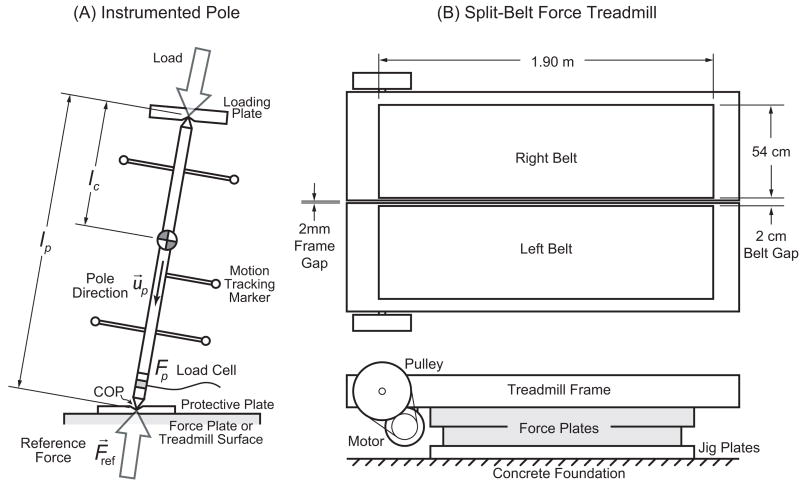Figure 1.
Equipment used to demonstrate Post-Installation Least Squares (PILS) calibration procedure. (A) Instrumented pole used for force plate calibration. The pole allows arbitrary directions and magnitudes of force to be manually applied to the force plate in arbitrary locations, using a motion capture system to record kinematics. The pole (Motion Lab Systems MTD-2) is modified to include an axial load cell, similar to [12]. Its ends are tapered so that only axial forces can be applied. A loading plate with a shallow chamfered hole is used to apply loads to the top; a similar, protective plate transmits those loads to the force plate below. The pole’s direction u⃗p is determined from locations of motion tracking markers, and the axial force Fp is measured by the load cell. These quantities contribute to the reference ground reaction force F⃗ref that is used for calibration. (B) Custom-built, split-belt, instrumented force treadmill (not to scale). Independent treadmills are mounted atop separate force plates, with a gap of 2 cm between the treadmill belts. The mounting of a force plate to the ground, or of a treadmill to the force plate, can introduce distorting loads that adversely affect the accuracy of the force plate. The PILS procedure is also demonstrated on a standard set of force plates mounted flush with ground (not shown).

